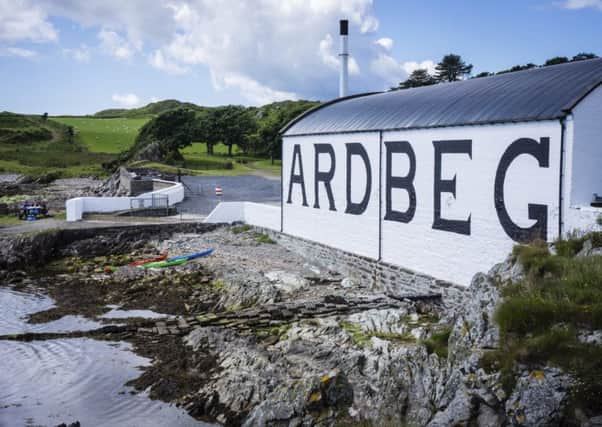Cheers to barley, whisky’s key ingredient


Barley remains a little-known crop for most people. The link between wheat and bread - or oats and porridge - is obvious to many, but few outside farming appreciate barley’s connection to our economic wellbeing. Because of its resilience, barley is Scotland’s largest crop (with approximately 2 million tonnes produced in 2014) and the cornerstone of our brewing and whisky industries. Let’s not forget whisky is the third largest contributor to the Scottish economy after oil and gas and financial services.
Although the distilleries might look quaint, and have tourist appeal, they earn us £135 per second in cold hard cash and the industry is experiencing consistent year on year growth. These ambitious plans for expansion come with knock-on effects for the Scottish agricultural sector in terms of a rapid increase in demand for premier malting barley.
Advertisement
Hide AdAdvertisement
Hide AdThe realisation of this demand at a Scottish level will profit the whole whisky supply chain from farmer to distillery, and indeed the local supply of this valuable resource also makes financial and environmental sense. The underlying economic potential is huge: a one per cent increase in the value of the whisky industry is worth £40m a year, and equally a 1% increase in the production of barley for malting purposes would represent a £1.5m increase in profits for farmers.
The development of Scottish-grown barley will undoubtedly underpin the provenance of whisky - as a homegrown and distilled product further adding to Scotland’s rising international reputation as a centre of food and drink excellence. Countries like New Zealand are learning from us how to add value to their food products based on quality and authenticity. We do need to address the dichotomy, however, whereby we grow such good quality food but have one of the unhealthiest populations in Europe. Again barley can play a role in a healthy, well-balanced diet due to its bounty of natural and health components; we just need to find more ways to build it into our diet.
We need to invest in helping industries that rely on barley become more efficient. This can be achieved by increasing yields and specific traits from crops, extracting energy from waste, reducing the need for chemical treatment of crops and helping farmers develop a sustainable business model that involves barley. The waste and processing residues can also be used as a sustainable feedstock to produce drugs and chemicals.
Immediate challenges loom ahead with the banning of certain agrochemicals by the EU. Short-term yields and quality may reduce due to the lack of traditional fungicide treatments. This may mean that homegrown barley fails to meet the high-quality standards required for malting by distillers and is diverted to animal feed. With malting barley selling at prices up to £200 per tonne and feed barley at £50 per tonne, there are clear impacts on the financial performance of the farming sector. Reduced reliance on agrichemicals is great from an environmental perspective but creates an extra urgency to develop safer alternative defences to pests and disease.
The James Hutton Institute is an internationally renowned crop, agricultural and land use research facility and has scientists lauded globally for excellence in barley science. We are the natural home for a new centre of excellence in research and knowledge translation to support all industries reliant upon barley and to ensure that this science delivers measurable impact on the ground.
That’s why as a chartered surveyor and project manager I’m working with the James Hutton Institute to develop a new £35m International Barley Innovation Centre (IBIC). Last month, we held an industry roundtable event as part of the project scoping and planning process. The event brought together key individuals from across the industry supply chain; they all agreed on the importance of coordinated research in barley based at the Institute’s facility in Dundee.
We are now working with industry partners to develop the business model for the centre and secure the necessary funding. If we want to realise the potential of barley as a key crop for Scotland, we need to invest in its future and consolidate our leading edge in barley science.
You didn’t realise how important barley is, did you?
• Philip Gane is capital projects manager at the James Hutton Institute in Dundee. The James Hutton Institute is a world-leading scientific organisation that researches crops, land, water and the environment. For more information visit www.hutton.ac.uk